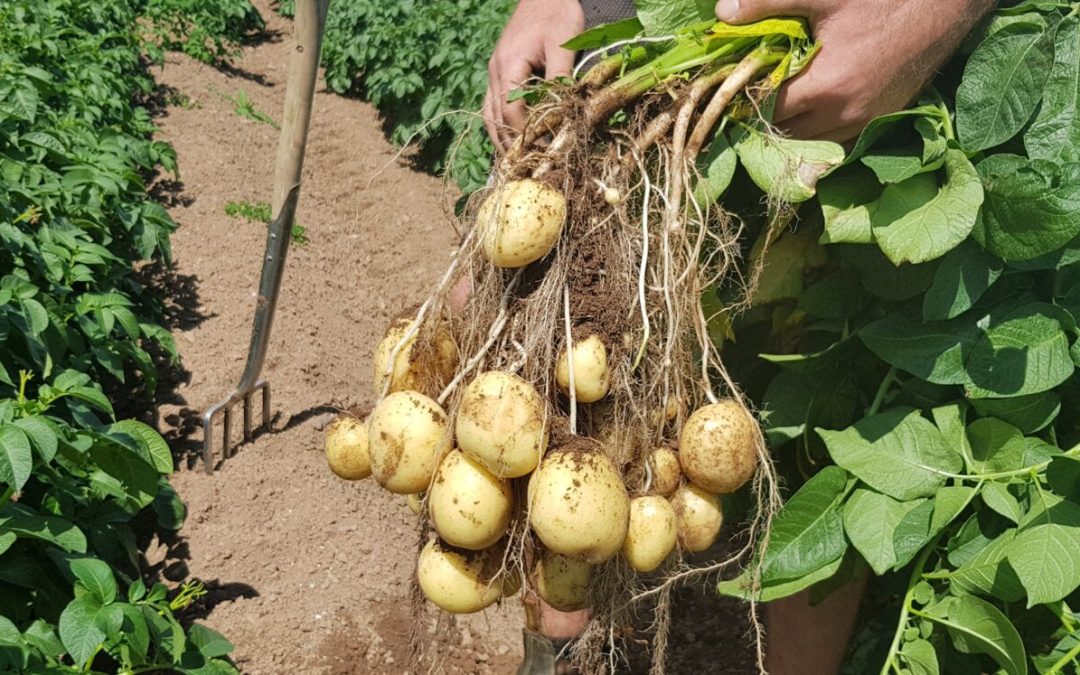In this era of drone and precision technologies one of the most important inspection tools in the armoury is still the humble spade!
When was the last time you dug down to see the result of your cultivations or, more importantly, before you culti- vated? So when is it best to cultivate? When soil conditions are right!Cultivating land when it is too wet causes damage to the soil surface and is heavy on both machinery and fuel. Worse, it causes structural damage in lower layers in the soil both by smearing, causing soil pans, and by impact shock waves compressing soil deeper and sideways.
Potato plants are poor rooters and these effects greatly inhibit root devel- opment, impede drainage and cause the build up of anaerobic conditions – sometimes surprisingly close to the surface.
Anaerobic conditions lead to the formation of toxic compounds and gases, which will poison crop roots for up to 20cm above the anaerobic zone.
For some crops, such a potatoes, ploughing is an inevitability. But are all the subsequent operations always beneficial? For example, bed-forming operations in the wrong conditions can actually do more harm than good and create impenetrable soil pans.
Around 70% of the potato area in England is grown on soils with high risk of structural damage and the wide-scale use of de-stoning machinery can increase the rate of degradation. The move to minimal- or no-tillage op- erations between ploughing phases generally has highly beneficial effects on soil structure, soil health and crop growth:
Increased beneficial soil microbial population. Ploughing and exposing soil to sunlight kills soil microbes and most beneficial invertebrates, especially earthworms.
It helps build up organic matter and develops a healthy earthworm pop- ulation. This in turn greatly aids drainage, aeration and soil structural stability.
Soil aggregate structural strength is greatly improved, leading to higher porosity: this supports better and deeper rooting and thus utilisation of nutrients and especially water re- sources.
Potatoes in particular have a low re- sistance level in terms of the soil strength they can push roots into and they will stop rooting unless they can find a crack or a worm tunnel to go down. When potato roots hit some re- sistance their growth is inhibited more rapidly than many other crops.
Research has shown that potato yields of 10-12 tonnes/hectare are lost through soil compaction. Keep the structure and minimise the damage by using lighter cultivations and lower impact machinery.
Minimal tillage is increasingly important in combinables and it can apply equally to potatoes and other root crops. Attempting to gain 6-10 cm of soil depth by subsoiling may cause more harm than good in the wrong conditions.
Finally, the use of specific microbial seed dressings, such as Emerald Consortium, and the use of specific foliar biostimulants designed to encourage rooting such OptiYield Diamond for potatoes, OptiYield Blue for Carrots or OptiYield Gold for cereals will greatly boost rooting too – but only in conditions where soil structure is not the limiting factor.
Best way to assess soil condition?
Firstly, there is no substitute for the spade! When walking fields it is easy to forget that soil is 3-dimensional and that what happens 50cm, 1m or even 2m down is just as important as what happens at the surface. Have a dig down or even use the back-hoe to dig the occasional small trench and look for signs of soil pans, poor drainage or sudden changes in soil character with depth.
Secondly, comprehensive soil analysis covering the full nutrient spectrum and a wide number of other physical, chemical and biological properties provides the only basis for meaningful interpretation of soil conditions and the needs for optimum crop growth.


